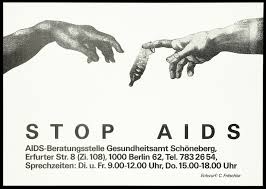Abstract
We assessed the risk of human immunodeficiency virus (HIV) transmission from heterosexual seropositive hemophilic men to their female sex partners through an HIV serosurvey and questionnaire study conducted during 1984-1987. Five percent of 21 female partners of asymptomatic men and 11% of 35 partners of HIV-symptomatic (acquired immunodeficiency syndrome [AIDS], AIDS-related complex [ARC], peripheral generalized lymphadenopathy [PGL]) hemophilic men had been infected when first tested. One of 19 seronegative women tested about 1 year later reportedly seroconverted. Only 18% of a sample of the serosurvey women responding to sex practices questions said their partners used condoms “nearly always.”
Over 60% engaged in oral/genital sex in addition to vaginal intercourse. Only 12% of still-seronegative women followed the preventive strategy of consistent avoidance of oral/genital sex, together with consistent condom use by the male partner. Further evidence for heterosexual transmission comes from the CDC national AIDS surveillance reports showing 25 women who acquired HIV infection through heterosexual contact with U.S. hemophilic men (September 6, 1988). Seven (28%) were diagnosed and reported in the first 6 months of 1988. Their ages range from 20 years to more than 70 years. The dates of infection for the women are unknown but must have been at least 5 years before AIDS diagnosis for at least one. Only approximately 30% of their male partners had already manifested any HIV-associated illness. Through May 18, 1988, six cases of AIDS have occurred in children whose infection was acquired through exposure of the mother to a hemophilic partner. Four were diagnosed in latter 1987. The median age at diagnosis was 4.5 months. Four had died. None of their mothers is as yet diagnosed.
Lawrence DN, Jason JM, Holman RC, Heine P, Evatt BL
Am. J. Hematol. 1989 Feb;30(2):68-76
PMID: 2913761
Lawrence-1989-AJ-Hem-sex-ptner-risk1